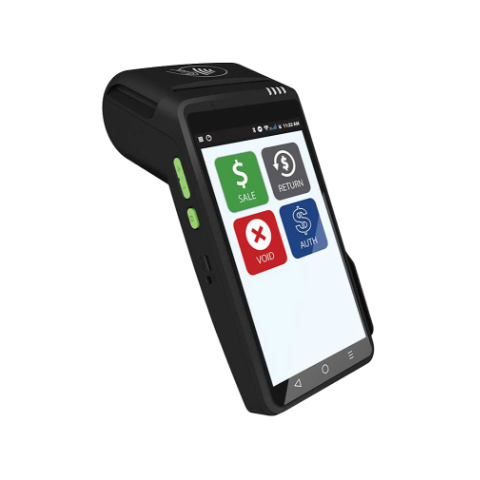June 28th, 2022 by J B
Let’s get back to basics. The basics of a payment device.
Filed in: Merchant Accounts |
Over the years I have trained thousands of merchants on the basic functions of their payment devices. In many cases I found myself training people who had been using the payment device for years not knowing the difference between a void and a return. Looking back at our past blog posts I realized that we had never covered the four basic functions of a payment device. So that is exactly what we are going to cover today, and you might just learn something new that will save you time and a few dollars on your processing fees.
We are not going to get into the specifics of any one credit card terminal or Point of Sale system, since the operations of each system are different. However, these core functions of a payment device are so fundamental to payment processing that these operations should be easily accessible on your own device. The goal is to help you have an understanding of what these functions are and how, why, and when to use them.
The following are the training basics that I provided every merchant during my time in customer service and technical support. This information is a great place to start when training the people in your business.
The Basics:
There are 4 basic functions of every payment device: Sales, Voids, Settlements (batching), and Returns. In order to learn how and when to use each of these functions, first, we also need to understand the transaction life cycle.
Sales: When processing credit cards, there are two steps to the transaction: authorization and capture. When you select the Sale function on your payment device and process a transaction, the device communicates through the network to obtain an approval. If an approval is received, the device will store the approval code and flag that transaction for capture later in the day. At this point funds have not yet been moved, they have just been reserved for the business. This is typically the time when a cardholder might see a transaction as pending when looking at their online banking.
Voids: The merchant has the ability to make adjustments to any transactions that have been authorized but not yet captured. This is primarily used by restaurants with a tip line on the receipt, however, this also allows the merchants a chance to void a transaction if a mistake was made. The benefit to voiding is that funds are not transferred and therefore you are not charged the discount rate for that transaction. Keep in mind you will still have to pay the transaction fees, however, you will avoid paying the percentage charged on that transaction.
Settlements: At the end of the day, your terminal will need to be Settled (batched). This is the function that captures and finalizes the transaction in your payment device and starts the process of moving funds between the cardholders and your bank. Once settled, a transaction cannot be changed in any way. In most retail businesses the settlement process is automatic, however, you still need to review your settlement reports daily to verify that the settlement was closed successfully. This process is not always automatic and for some industry types, it is normal for a processor to not allow auto settlement. Whether automatic or manual, you should be verifying that the settlement report shows it has been successfully completed as this is what starts moving the funds to your account.
If there is any sort of error, or you are unsure if a batch closed, you need to reach out to your payment processor as this will cause delays in funding. It is also important to keep in mind that the settlement date is the date that will ultimately show up on the card holder’s statement and that any authorization over 24 hours old could be considered a higher risk by the issuer and may cause the cost of any such transaction to increase.
Returns: Think of a return as a reverse sale. Processing a return will pull money from your current batch or bank account and send those funds to a cardholder. Just like a Sale, the return must be settled before the funds begin to move. And subsequently, you can also void a return in the instance that there was a mistake entering the return. Keep in mind most processors will not charge you a percentage rate for the returned amount, however, you have already assessed a percentage on the original sale. A few interchange categories will automatically credit you back for the original sale after a return is processed.
Quick Recap:
- A Sale authorizes the transaction and stores it for capture.
- A Void deletes a transaction as if it never happened, used only prior to Settlement.
- Settlement finalizes your transactions and starts moving money.
- A Return is the reverse of a Sale, used any time you cannot void a transaction.
Important Tips:
There are many other functions on the standard payment device, however, for most businesses, these four basics are the only ones you will likely ever use outside of talking with your payment provider. Below are a few things to remember when using your payment device and why they are important to the security of your business.
- Customer-facing equipment is designed to give people outside of your business the options they need to complete a transaction. The business-facing device should not be accessed by anyone outside of your business.
- There are a few bad actors out there who could cause all kinds of issues for you if they get ahold of your device even for a moment.
- If anyone outside of your payment provider asks you to use a function that you do not normally use, that is a HUGE signal that you need to stop the transaction or contact your payment processor immediately.
- There is one way to run a Sale, there are multiple ways to make it appear like you ran a sale when you didn’t.
- Do not use your payment device to accept payments on anyone else’s behalf.
- This makes you financially responsible for not only the fees generated but for any risk or fraud-related issues.
- If at any time during a transaction you feel like something isn’t right, it is perfectly fine to tell your customer your credit card machine is not working and to call your processor’s support team for advice.
- You know your customers, how they act, what they purchase… It’s common to hear a merchant say “Something about that sale didn’t feel right” when we are assisting them after they have been the victims of fraud. If it doesn’t feel right, pause and consult your processor.
- Do not run your own card for more than $1.00.
- I know there are some legitimate times when someone might be tempted to use their own credit card at their business. The problem is it could also be viewed as using a credit card to advance your business money, which breaks all kinds of rules that could be an article on its own.
A Brief Note on Liability:
When it comes to EMV(dipped) and NFC (Current Contactless) transactions, if the business accepts a stolen credit card, the issuer assumes the liability to repay the cardholder. If a transaction is swiped or keyed, the business assumes the liability to repay the cardholder. Avoid accepting swipe and keyed sales whenever possible. While this is not going to be an option for some businesses, you need to at least be aware of the risks. Cardholder protection comes at the cost of the businesses that either issue the cards or accept the payments, and that is strictly based on how the payment was accepted.
Terminal How-To Videos
If you are looking for more information on how to use specific lines of terminals, check out our video playlists linked below.






